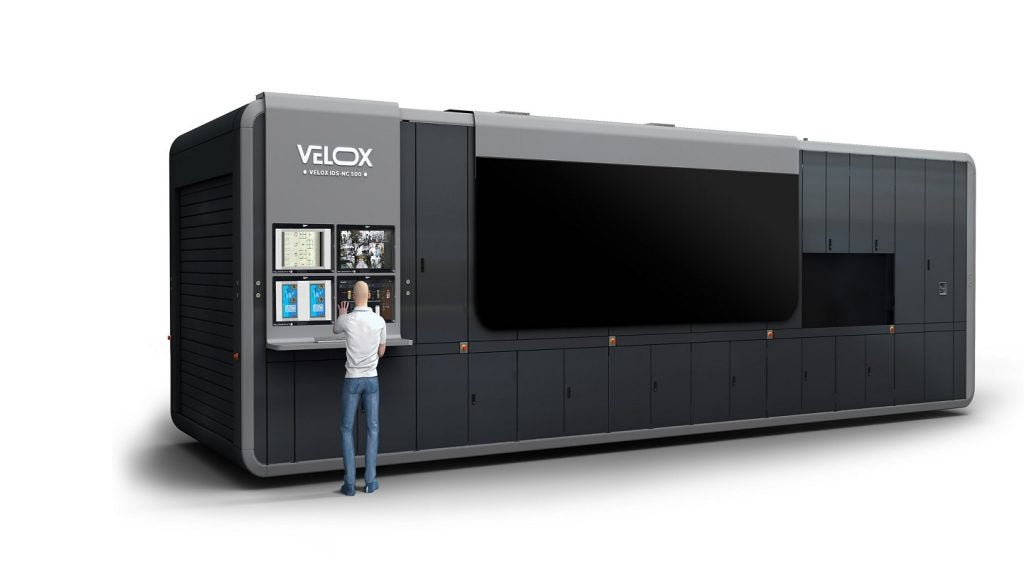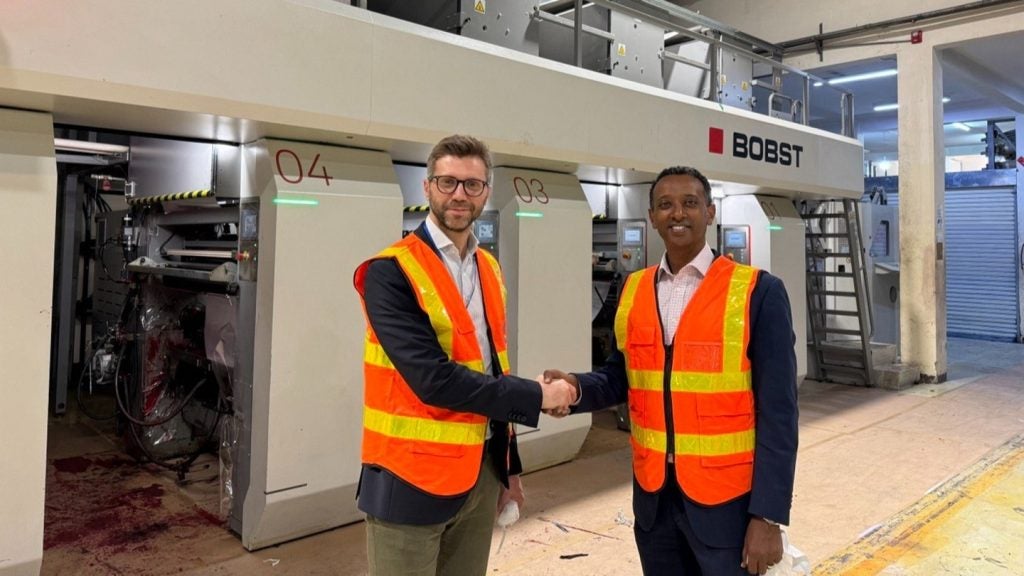
In today’s unpredictable retail market, maintaining a consistent brand identity is an absolute must for vendors; any unexpected variation in a product’s packaging – be it in artwork, colour or the positioning of corporate brand elements – could result in confused customers ultimately opting to buy elsewhere. On top of this, packaging costs and delivery times must not be overlooked.
"In this ever-changing and volatile retail market, retailers are demanding more, and constantly looking to stay one step ahead of the competition," confirms Debbie Waldron-Hoines, executive director of the European Flexographic Industry Association (EFIA) and director of Avant-Tout, a print solutions management business specialising in flexography.
The vast majority of work in the packaging sector can be produced using either gravure or flexographic printing.
"In most cases, the brand owner or retailer will not specify a particular process," Waldron-Hoines notes. "We need to educate them so they understand that flexo is the way forward in terms of price, speed to market and consistency."
Flexo printing: a growing market
Flexography, or flexo, is a rotary relief printing process that uses a flexible relief plate and can be used to print on almost any type of substrate. The printed image is achieved by means of a soft flexible plate, which contains the image to be printed in relief. The plate is adhered to a roller (the plate cylinder) and placed on the press. Each colour of ink to be applied must have its own plate and inking assembly.
See Also:
Pira International’s latest report on the flexographic printing market predicted that the global market would reach $136bn in 2011 and grow steadily over the following five years by 2.1% per annum. For Waldron-Hoines, this projection rings true. Used today for newspaper, book, corrugated, label, film and carton printing, and printed electronics, flexography is in widespread use across the packaging industry because it can print on difficult substrates.
How well do you really know your competitors?
Access the most comprehensive Company Profiles on the market, powered by GlobalData. Save hours of research. Gain competitive edge.

Thank you!
Your download email will arrive shortly
Not ready to buy yet? Download a free sample
We are confident about the unique quality of our Company Profiles. However, we want you to make the most beneficial decision for your business, so we offer a free sample that you can download by submitting the below form
By GlobalData"In recent years, many advances have been made in all the component elements used in the printing process, such as anilox rollers, ink, photopolymer plates, mounting tape and flexographic printing press design, and this has brought about a rise in quality and hence increased uptake," she remarks.
According to Waldron-Hoines, companies are increasingly switching to flexo because the process is now more than able to deliver the quality of gravure and lithography, while reducing time to market – thus meeting the brand owner’s paradigm of ‘quality up, price down’.
"Flexo printing plate manufacturing is quicker and cheaper than gravure," she adds. "However, the same claim cannot be made for lithographic origination and plate-making, which is often less expensive."
Historically, flexographic printing has had its drawbacks, the most cited being the inconsistency between production runs. This problem, however, has been reduced and better controlled over time thanks to technological developments.
Top flexographic advancements
Waldron-Hoines cites six key technical advancements that have contributed to improvements in the efficiency, quality and sustainability of flexographic printing.
- Servo-driven/gearless machines: The move to gearless presses means the flexo process now achieves far better register with smaller colour grips and no longitudinal issues or gear chatter. This results in better press harmonics and higher running speeds, improving productivity and efficiency.
- Anilox and print sleeves: These have contributed to the quick turnaround of printing designs, making short-run work commercially practical on large-format machines. The print quality achieved in conjunction with a servo-driven press is an improvement over old-fashioned integral rollers.
- Register/impressioncontrol systems: These systems have helped to dramatically reduce set-up and print run waste, making it possible to create a saleable product within one-and-a-half turns of the central impression. The spot-on registration of these machines has given printers the confidence to run dot-on-dot (producing spot colours out of process ink) designs, resulting in the printing of fewer colours and, in some cases, cost savings on inks. This is being led by HD/high-resolution processing of the printing plate.
- Web viewers: With machines now running at such high speeds, print quality can only be viewed using these integral systems. The incorporation of fault-finding systems within these programmes has also cut waste at high speeds.
- Spectrophotometers: Spectrophotometers measure the reflection or transmission properties of a material as a function of wavelength. Most retailers now use this system for their colour brand management and to help sales teams manage customer expectations throughout the entire process, from design to print.
- 6/7-colour print technology: This is the use of cyan, magenta, yellow and black, plus supplementary green, blue, orange or pink, depending on the software chosen. This technology enables the production of a much wider colour gamut, giving a better pantone-specific colour match. It is reliant on the consistency of density and dot gain on press, as well as excellent control of register on press.
Ongoing ink innovation
Significant steps have also been made in the arena of multipurpose ink development. Multipurpose can mean either the ability to be applied to multiple substrates or to be used in both surface and lamination print runs. The advantages include reduced stock holding for printers, waste reduction, and speed and flexibility in changeover of jobs.
"Multipurpose inks provide the cost efficiencies and production simplicity that is so important to retailers and brand owners in the complex print environment," Waldron-Hoines emphasises.
Looking to the future, higher-speed inks continue to dominate the R&D agenda, as do products suitable for high-temperature packaging applications or ‘ovenable’ inks. "Packaging developers want to produce packs that can transition from freezer to oven in one step," says Waldron-Hoines. "PUR inks can withstand boil, sterilisation and pasteurisation temperature ranges,
but the over-200°C microwave and oven temperatures remain unachievable for the normal range of pigments used in today’s sophisticated ink palettes."
Standardisation and promotion
While technological innovation is essential to flexo printing advancement, the industry must also keep consistency in mind. As such, work is underway to develop a print standard for flexo, ISO 12647-6, in line with ISO 12647-2 for litho.
"The aim of this is to set print parameters that most printers should be able to achieve throughout the production chain," she explains. "This means that the client-approved image should be achievable on press. The use of these standards, new plate technology, screening techniques and improved press manufacture achieves much better quality and consistency."
Industry standards will no doubt encourage packaging stakeholders to view flexo as a more credible option, but education is also key to the growth of this high-quality and cost-efficient form of printing.
"Collaboration and education of all parties in the packaging supply chain is vitally important," Waldron-Hoines concludes. "More needs to be done to promote what flexographic printing can achieve; hopefully the market’s eyes can be opened to its true potential."







